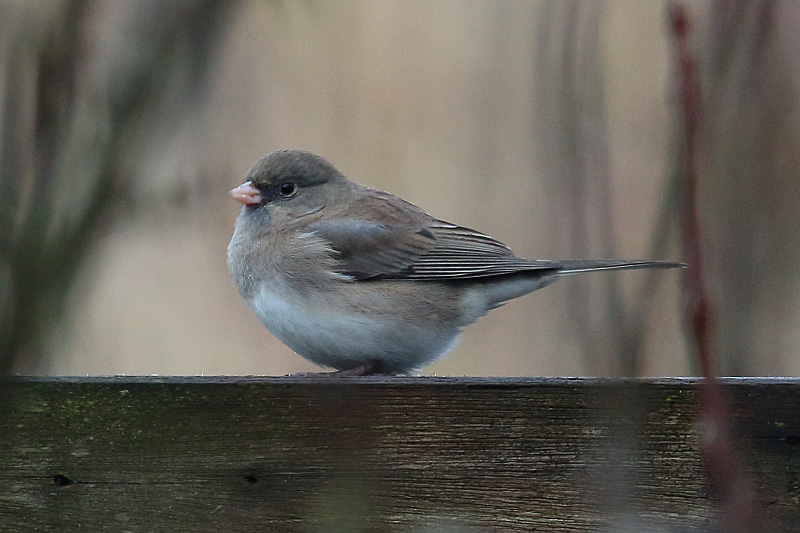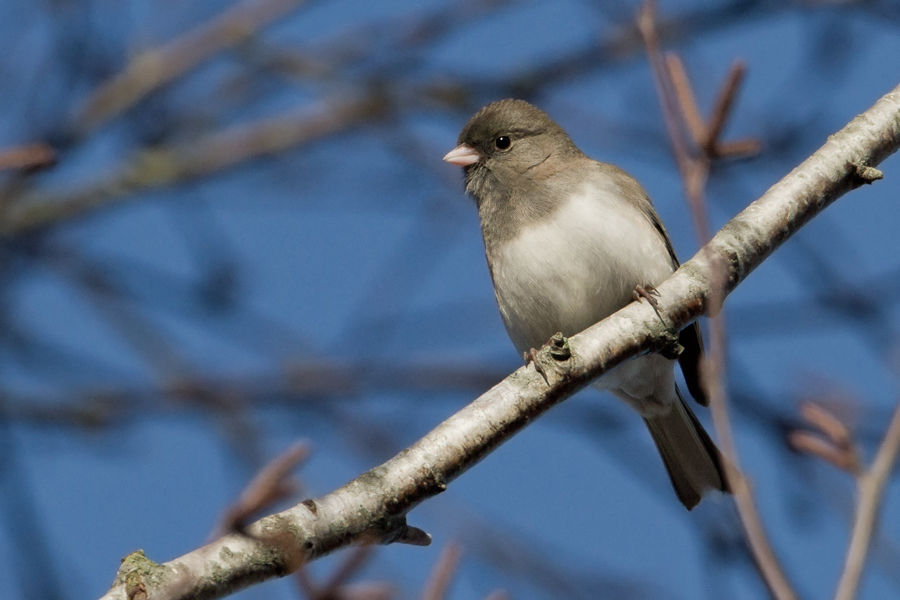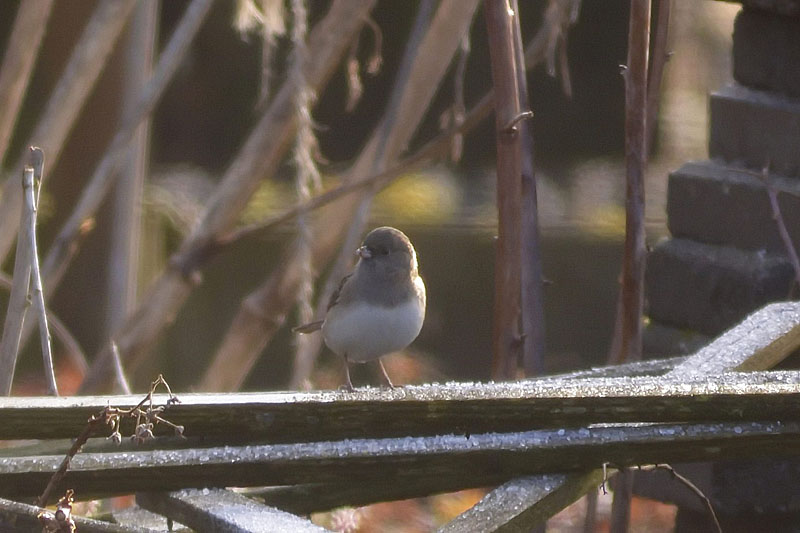Dark-eyed Junco - Junco hyemalis
On Sunday 1 February 2015 Jacob Bosma saw a bunting-like bird at Beijum Gr. He heard it make a short 'tic' before it disappeared. On 2 February the next day he found the bird again at around noon. Now this time he could see what it was: a Dark-eyed Junco Junco hyemalis, a North-American passerine and only the second record for the Netherlands! He quickly warned other birders and the bird was intermittently seen in gardens and in a disclosed large vegetable garden.
I arrived at around 14:40 and saw the bird in just a minute, but only in flight. I had no binoculars with me, as I came straight from work together with Alexander Buhr, who lives nearby the place where I work. After an hour wait the bird appeared in the vegetable garden at around 15:30. There we all had good looks before the bird disappeared in the gardens of this small suburb.
For Jacob Bosma this bird was his third discovery of a mega. The other two were both in 2004, the Western Black-throated Wheatear at the Eemshaven Gr and the more famous pair of Pine Grosbeaks at again Beijum Gr, only half-a-kilometer from the Junco!

Note the brownish wash on the upperparts; it seems there is a moult limit in the greater coverts;
4 February 2015, Beijum Gr; © Eric Menkveld.

Note the pink bill and the sharp demarcation between the grey breast and the white belly;
3 February 2015; © Jaap Denee.

Most often the bird was skulking and seen from quite a distance, 3 February 2015; © Harm Niesen.
3 February 2015; © Ricardo van Dijk.
Close inspection revealed it was a first-winter female. It was accepted as the second record for the Netherlands. The first record was in 1962 when an exhausted bird was taken into captivity and lived for five years in captivity before it was known it was a Dark-eyed Junco! Dark-eyed Junco is a rare bird in Europe, with 38 records in the UK (last in 2011), three in Norway (last in 2009, with one record in 1987 compromising two birds), one on the Azores (in 5 November 2009), one on Gibraltar (18-25 May 1986), one in Denmark (13 December 1980), one in Poland (4 May 1963), one on Iceland (6 November 1955) and two in Ireland (30 May 1905 and 10 August 2000). Also two records of dubious origin in Italy (28 November 1914) and on Mallorca, Spain (27 July 2011).
Do you want to go to the main-index, the 2015-index or the next new species, the Thayer's Gull?


